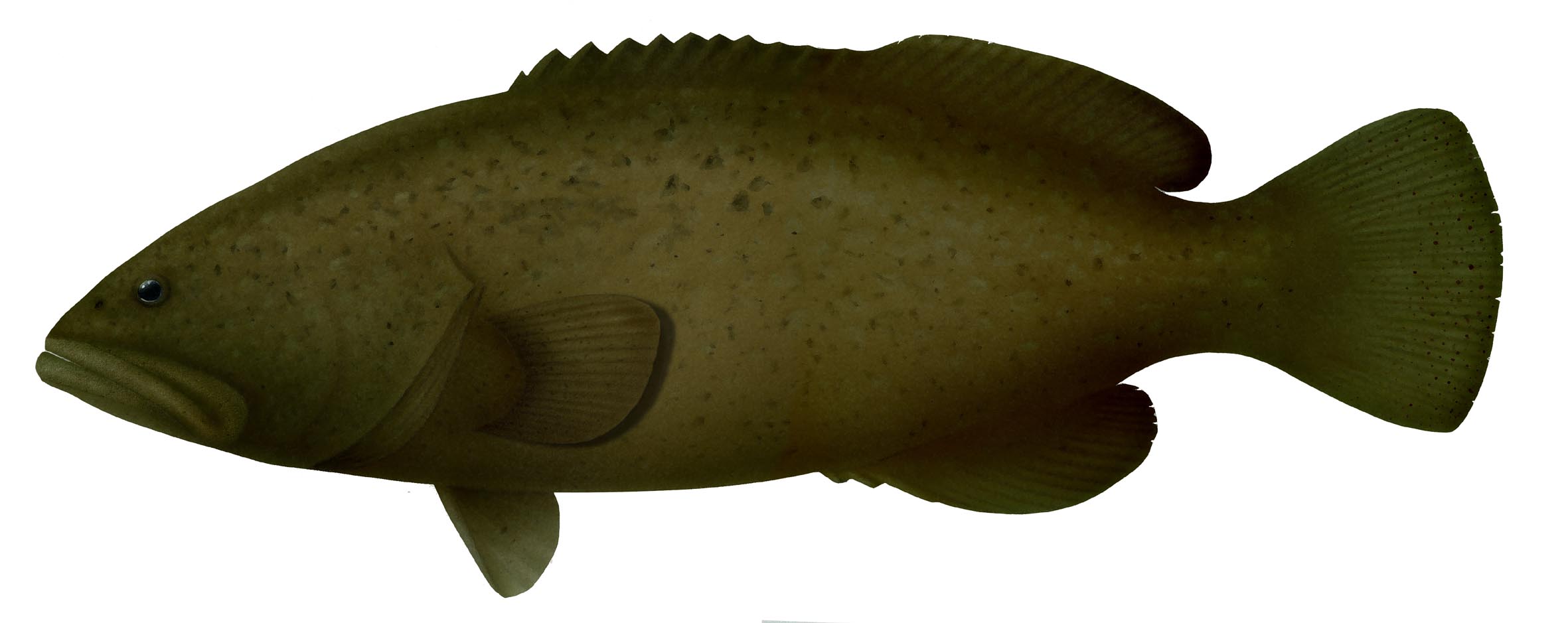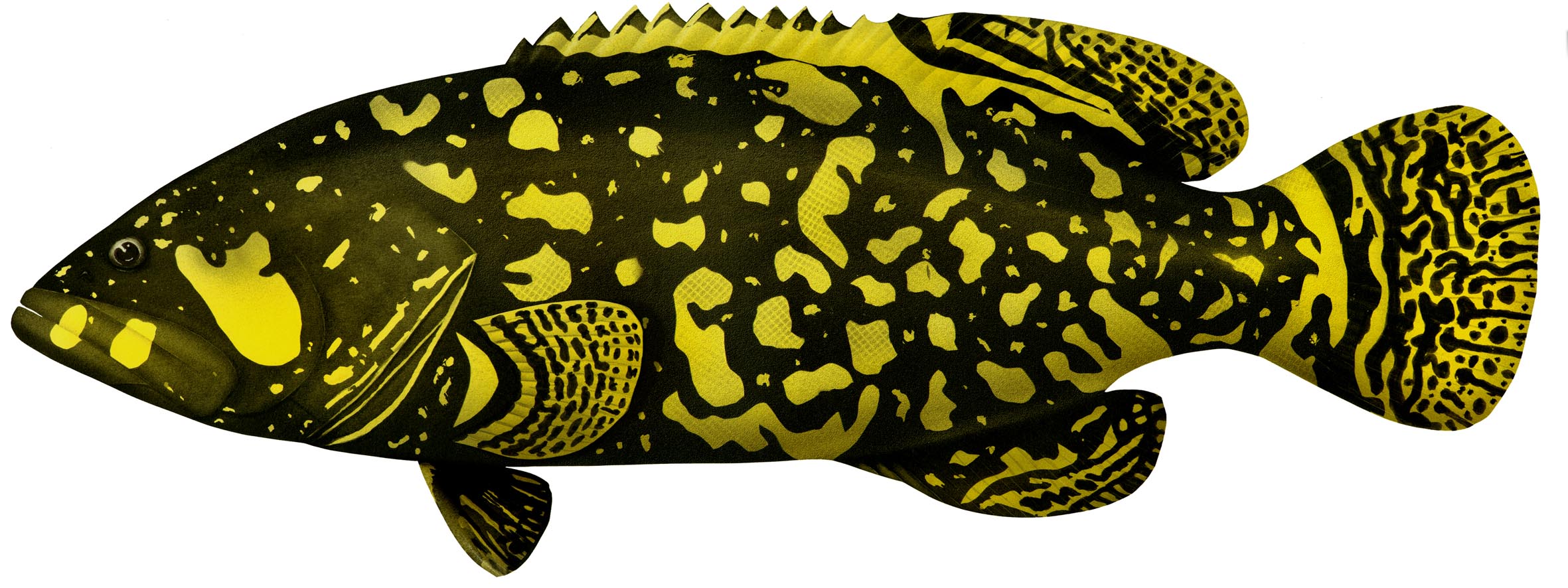
Giant Queensland groper
Epinephelus lanceolatus


Giant Queensland groper (or grouper), also known as the giant groper or Queensland groper, is one of the largest reef-dwelling fish in the world. They have a wide distribution throughout the tropical waters of the Indo-West Pacific. In Australia they occur along all tropical and warm temperate coasts but are rarely found in cooler waters to the south.
Giant Queensland gropers are listed as protected fish in NSW under the Fisheries Management Act 1994. Heavy penalties apply for taking or possessing them.
Description
Giant Queensland gropers are one of the largest of all bony fishes, reaching lengths of up to 3 m and weighing about 600 kg. Juveniles have a large blotched and banded pattern, but as adults become mottled and spotted to evenly dark grey or brownish. The mottled colouration blends with the surroundings, providing good camouflage for ambush hunting. They have a rounded tail. Adult giant Queensland gropers’ stocky shape and brown colouration give them a nearly potato-like profile as they rest motionless on the bottom or hover in mid-water, using only tiny fin movements to maintain their position.
Habitat and ecology
- Giant Queensland gropers occupy a variety of habitats depending on their stage of growth. Estuaries, coral reef and associated habitats are all important to their survival.
- Giant Queensland gropers are commonly seen in caves on coral reefs and around wrecks. Along outer reefs they have been found in large lagoons and on reef slopes to depths of at least 50 m. Both adults and juveniles are also found in estuaries.
- Giant Queensland gropers are usually solitary in nature and are long-lived.
- They have a curious nature and will often approach divers at close range. Although not generally considered dangerous, large Queensland gropers should be treated with caution and should not be hand fed by divers etc.
- Giant Queensland gropers are large-mouthed ambush hunters that feed on a variety of fishes, as well as small sharks, juvenile sea turtles, crustaceans and molluscs—all are swallowed whole.
- Males reach sexual maturity when they are approximately 1.3 m in length
Why are giant Queensland gropers protected?
- Commercial and recreational fishing activities including spear fishing have the potential to adversely affect populations of giant Queensland groper.
- Collection, particularly of juveniles, for the live reef fish and marine aquarium trade may lead to a reduction in the number of fish surviving to adulthood to breed.
What conservation actions are underway?
- Maintaining bans on taking giant Queensland groper in NSW waters and protecting them from illegal line fishing and spearfishing activities.
- Educating fishers on the best ways to identify and return any live incidentally caught giant Queensland groper to the water.
- Giant Queensland groper habitat is located in a number of protected areas in NSW including the Solitary Islands Marine Park, Julian Rocks Aquatic Reserve and Cook Island Aquatic Reserve.
- Scientific study to find out more information about the breeding biology of the species such as its migratory habits and spawning aggregations.
Legal implications
Taking or possessing giant Queensland groper (or any other species of protected fish) is an offence and heavy penalties apply. For corporations, these penalties can include fines of up to $55 000 while individuals can face fines of up to $11 000 and up to 3 months in prison.
Bibliography and further reading
Heemstra PC & Randall JE 1993, ‘FAO species catalogue Volume 16 Groupers of the world (Family Serranidae, Subfamily Epinephelinae)’, Food and Agriculture Organisation of the United Nations, Rome, 382 pp.
Kuiter RH 1993, Coastal fishes of south-eastern Australia, Crawford House, Bathurst, NSW, Australia, 437 pp.
Lau PPF & Li LWH 2000, Identification guide to fishes in the live seafood trade of the Asia– Pacific region, WWF Hong Kong and Agriculture, Fisheries and Conservation Department, Hong Kong, 137 pp.
For further information
For more information on general fishing regulations check with your local fisheries office or visit www.dpi.nsw.gov.au/fisheries
To contact your local NSW Fisheries Office visit https://www.dpi.nsw.gov.au/contact-us/contact-a-dpi-fisheries-officer or phone 1300 550 474.

